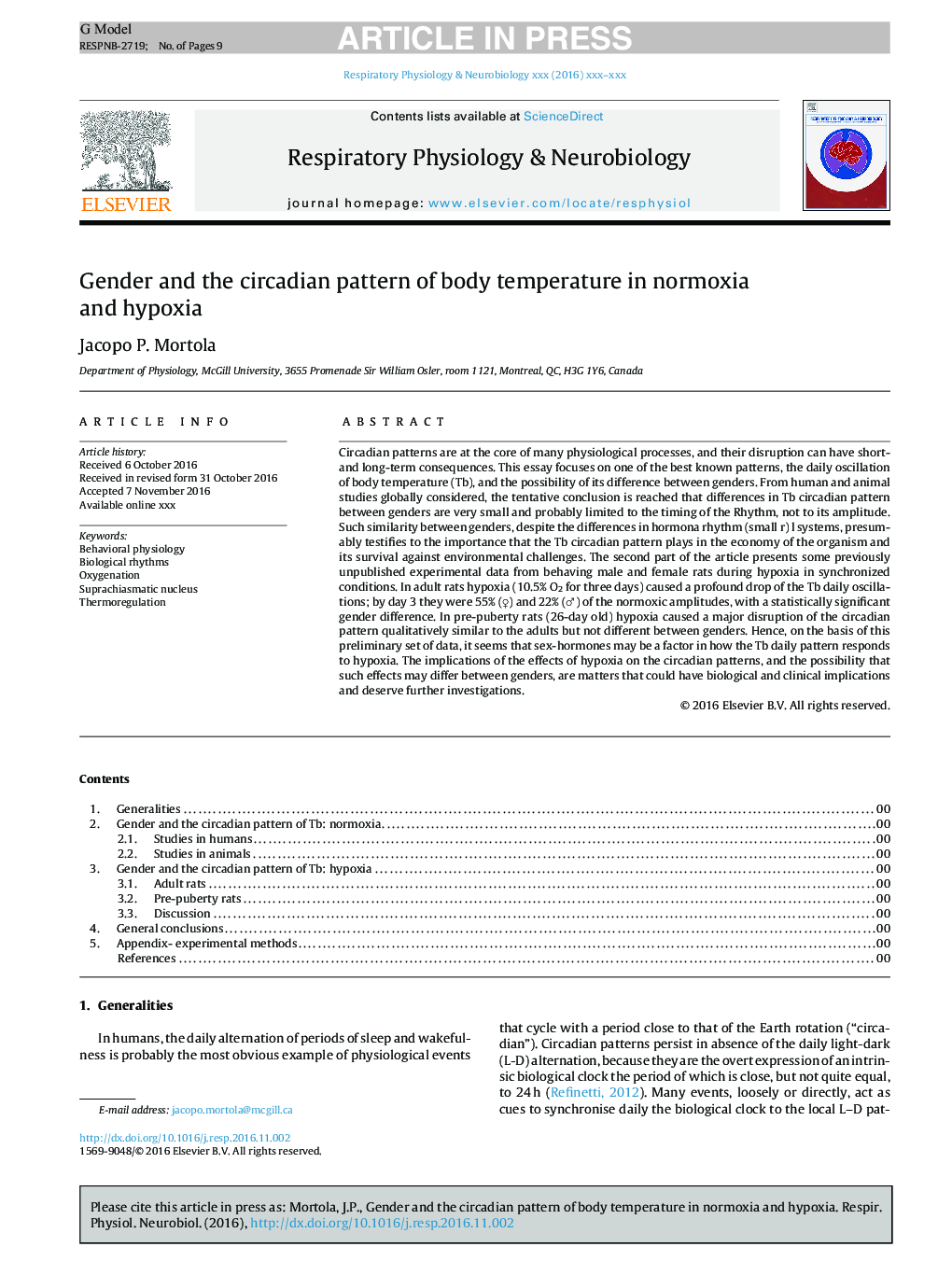| Article ID | Journal | Published Year | Pages | File Type |
|---|---|---|---|---|
| 5594091 | Respiratory Physiology & Neurobiology | 2017 | 9 Pages |
Abstract
Circadian patterns are at the core of many physiological processes, and their disruption can have short- and long-term consequences. This essay focuses on one of the best known patterns, the daily oscillation of body temperature (Tb), and the possibility of its difference between genders. From human and animal studies globally considered, the tentative conclusion is reached that differences in Tb circadian pattern between genders are very small and probably limited to the timing of the rhythm, not to its amplitude. Such similarity between genders, despite the differences in hormonal systems, presumably testifies to the importance that the Tb circadian pattern plays in the economy of the organism and its survival against environmental challenges. The second part of the article presents some previously unpublished experimental data from behaving male and female rats during hypoxia in synchronized conditions. In adult rats hypoxia (10.5% O2 for three days) caused a profound drop of the Tb daily oscillations; by day 3 they were 55% (â) and 22% (â) of the normoxic amplitudes, with a statistically significant gender difference. In pre-puberty rats (26-day old) hypoxia caused a major disruption of the circadian pattern qualitatively similar to the adults but not different between genders. Hence, on the basis of this preliminary set of data, it seems that sex-hormones may be a factor in how the Tb daily pattern responds to hypoxia. The implications of the effects of hypoxia on the circadian patterns, and the possibility that such effects may differ between genders, are matters that could have biological and clinical implications and deserve further investigations.
Related Topics
Life Sciences
Biochemistry, Genetics and Molecular Biology
Physiology
Authors
Jacopo P. Mortola,
